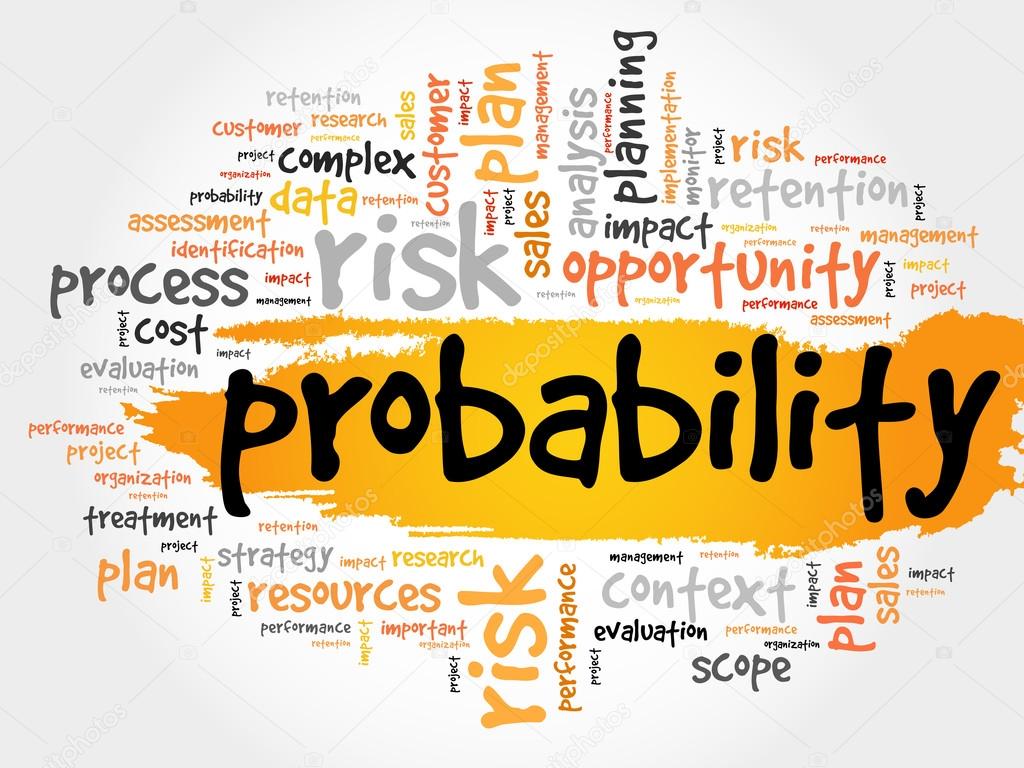The concept of probability is not something new or unknown. It has always existed in everyday life; it is omnipresent and ubiquitous. Uncertainty is something that we all deal with daily. However, for a long time in the history of civilization, there was no formally laid down method to gauge or measure this uncertainty. It was much later, somewhere in the 17th century BC that a proper mathematical connection between probability and maths was established and that too, quite accidentally. Having held on humanity for ages, the theory of probability was conceptualized finally somewhere in the mid 17th century BC when two of the world’s greatest mathematicians – Blaise Pascal and Pierre de Fermat – were gambling and had a dispute. In 1657 the first book of probability was published.. Almost 150 years later, the theory of probability was introduced, leading to its application in the idea of errors, statistical mechanics, and actuarial mathematics.
Data plays a vital role in solving probability problems. There are four types of data in statistical science. It is Ordinal, Nominal, Ratio, and Interval. Making sense out of comprehensive data can be simple. Data simplified by Cuemath make things easier to comprehend and analyze. A lot of probability questions can be answered with the help of data.
There can be several other conditions in which we require the possible number of chances.
Like, the question is, ‘If a couple has two female children; what is the probability that their next child will be male’; or
If a coin is tossed, what is the chance that the outcome will be a head? or
If a dice is rolled, what is the probability that the outcome will be the number 6; or
If a bag consists of 5 marbles in a bag, 4 are coloured blue, and 1 is coloured red, what is the chance that a blue will be picked up?
Related:
7 Best Educational Apps for Kids
Having the concepts of probability clear is a must!
This is a typical probability question and the answer can be computed by using the mathematical theory of probability. The secret to the answer lies in the fact that you need to be thorough with the probability theory and the maths behind it. Having your concepts and basics in probability clear should be the main focus here. The right way to understand the theory, the logic, and the way to approach such probability questions is to hire competent and experienced tutors who help the child to learn in an interactive, fun, and engaging manner.
What is probability?
As the word means, it means a likelihood or possibility of the occurrence of an arbitrary event. The theory of probability was introduced in Maths to develop an equation or formula to calculate the odds of the event happening. Probability is calculated in the range of 0 to 1.
0 states that there is no chance of the event happening, and 1 means the highest likelihood of the occurrence to happen!
Understanding the topic of probability through this formula
The formula for calculating probability is the ratio between favourable outcomes to the total number of outcomes. To calculate the answer to the question, ‘If a couple has two female children; what is the probability that their next child will be male’,
Probability of an occurrence = Number of favourable outcomes/ Total Number of outcomes
Types of probability
There are three types of probability.
- Theoretical Probability – the chance of something happening based on reasoning. – So, if a coin is tossed, the chances of getting a tail are 0.5.
- Experimental Probability – this is calculated by dividing the number of possible outcomes by the total number of trials.
- Axiomatic Probability – this kind of probability is calculated based on the possibility of a previous outcome.
If a couple has two female children; what is the probability that their next child will be male?
To calculate the accurate answer to this question, you need to have a clear understanding of the concepts, formula, and equation. The topic gets complicated with growing years. Thus, parents should stress and make sure that their kids start to learn the rules and techniques of probability, right from the beginning when the concept is introduced in the school.
Related:
Five Learning Apps to Help Students Increase Knowledge
The following pointers can be an effective way to build a foundation for your child:
Look for the right maths tutors.
While in the school these days, teachers do focus on getting the concepts right; however, it is not possible to offer one-to-one tutoring and training. Hence, having the child enrolled with a forward-looking tutor is one of the best ways to empower the child and help her or him learn from the best tutoring company.
Proficiency in mathematics is a must.
A mathematics tutor needs to be highly competent in her field. Not only should she have the required qualifications, but she should also have the skills and ability to help children understand complicated concepts like Probability. It is vital to mention here that unlike many other topics in maths, probability is not about simple calculations and involves a lot more than arithmetic understanding. Here the child needs to have his concepts clear about the question, ‘If a couple has two female children; what is the probability that their next child will be male?‘ actually means and what is the logic behind getting to the answer.
Probability is not a simple topic.
It is not because it is a bit different from the conventional topics that are taught in mathematics. It involves analysis and that too of random events and occurrences. The students’ mind needs to be attuned to have the insight to understand the likelihood of an occurrence without happening in the real-word or much before the event occurs. Towards this end, tutors need to create that kind of scenario that helps rake the grey cells of the brain, and the student gets into an immersive mode of learning. Once the theory and the gist are understood with clarity, calculating the outcome is not much difficult. If the concept, however, remains unclear. In that case, the student will always be in doubt and will never be able to compute the answer for other such probability-related questions in the future, on his own.
A good teacher will make it all easy and logical
The essence of going to a good tutor is that the concept becomes crystal clear, and the student understands the logic or the rationale behind approaching the topic. The use of innovative methods that are technology-based, interactive interfaces, interesting logic-oriented case studies, and many other such tools can help the child grasp the fundamentals better and faster.
Calculating ‘If a couple has two female children; what is the probability that their next child will be male’?
A couple with three children has the following different combinations of possibilities in the gender of the children –
1 – Female, Female, Female
2 – Female, Male, Male
3 – Female, Male, Female
4 – Female, Female, Male
5 – Male, Male, Male
6 – Male, Female, Male
7 – Male, Female, Female
8 – Male, Male, Female.
We see that there are 8 possible combinations as far as the gender of the children is concerned. In this question, it is mentioned that we need to find the probability of the last child being a Male child. There are 4 such scenarios where the youngest child is a Male – options 2, 4, 5, and 6. It is also mentioned in the question that the couple’s elder two kids are both Females. Therefore, the probability that the third child will be a Male is ¼.
Taking many more common day examples to understand the reasoning behind probability
Scenario #1:
A common example is from the game of dice. What is the probability that when you roll a dice, you will get the winning number’ 6′?
The simplest way to understand this is that there are six possible results that one can get – 1, 2, 3, 4, 5, and 6. So, the chance that any of these numbers will appear is 1:6, or the probability is 1/6.
Scenario # 2:
The simplest example is that of the coin being tossed. What is the probability of heads or tails?
Since there are only two possible outcomes when you toss a coin – head or tail, the probability that either will be the outcome is 1:2 or ½.
Scenario # 3:
If a bag consists of 5 marbles in a bag, 4 are colored blue, and 1 is colored red, what is the chance that a blue will be picked up?
In this case, the total number of marbles is 5, and blue-coloured marbles are 4. So, the probability that you will pick a blue-colored marble is 4/5 or 4:5.
Creative tutors make it all simple for the child.
Imagine a line that has ‘Impossibility’ on the one hand and ‘Certain’ on the other end. Between these two extreme ends, the mid-point is an even chance or a balanced point. Now, between the mid-point and the impossible end, there is another mid-point which is termed as unlikely. Between the mid-point of the line and the inevitable end, the mid-point is called likely. This is just basic. Good tutors will take the help of creative methods to make it all very interesting and simple for students.
The answer to the question, ‘If a couple has two female children; what is the probability that their next child will be male?’ has been devised but the question can get more complex from here. Hence, it makes sense to research well before hiring the right tutor for the child; given that there are very many topics in Maths where your child will need expert help. Let us know how your experience has been when trying to get your child to learn and understand the topic of probability thoroughly.
Check Technoroll for informative articles.





